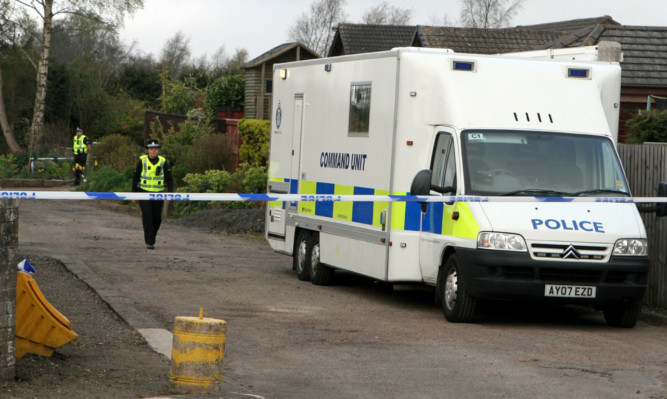A spade found in the boot of a car driven by a murder accused was covered in soil which matched samples taken from a makeshift grave, a jury has heard.
Police found the garden tool during a search of a blue Toyota Rav4 which Nikola Zhulev was seen driving.
The vehicle also spotted near woods where a hole was dug in a clearing was said to have been owned by deceased Perthshire jeweller Alan Gardner.
Mr Gardner was found in his Balbeggie bungalow cocooned in a duvet with his feet bound last April.
He is thought to have died from a brain stem malfunction as a result of a head injury after allegedly being hit on the head with a heavy frying pan, the High Court at Livingston was told.
Zhulev, 30, a prisoner at Perth, denies a series of charges including murder and attempting to defeat the ends of justice.
Giving evidence, Professor Lorna Dawson, 58, principal soil scientist at the James Hutton Institute in Aberdeen, said red earth on the back of the spade had a “striking degree of similarity” to soil taken from the bottom of the hole.
She told the jury: “They were virtually indistinguishable in their spectral colour. There was no measurable difference.”
She said the results of organic and elemental profiling of the soil samples also showed close similarities.
PC Alistair Ogilvie, 43, told how he found the hole in the woods at St Martin’s, near Guildtown, close to where a farm worker reported seeing the blue Toyota.
He said: “It was very square, had neat edges and clearly wasn’t a natural phenomenon. I didn’t measure it. I’d estimate at approximately three feet by four feet. It was full of water but I couldn’t see anything underneath the surface of the water.
“There was a mound of what I took to be the soil that had been dug out from the hole and a pile of leaves which I took to be taken from the surface prior to the hole being dug.
“I highlighted it to other inquiry officers who were also present and cordoned off the area using police tape to preserve the area for further inquiry.”
Gaille McKinnon, 54, of Dundee University, the only accredited forensic archaeologist and anthropologist in the UK, said the hole appeared to have been freshly dug and stepped on either side.
She told the jury: “It was large enough to have potentially concealed a body but, because we had the stepped platform, it reduced the dimensions. If the body was in a suitcase, bound up very tightly, in the foetal position or wrapped up in something it would make it easier to place it (in the hole).”
Mark Griffin, 34, from Perth, told the jury he and the accused who he knew as Nico had shared heroin together.
He said: “I’d buy them from other people, dealers and the like, because we were both heroin addicts.”
He told how ‘Nico’ had offered to sell him Mr Gardner’s Toyota for around £750, claiming the logbook was in his name.
“He told me a while later that the guy had put the price down to £500 or something. The alloys on it were worth £500 themselves so I thought to myself it’s a good deal.”
The trial continues.
